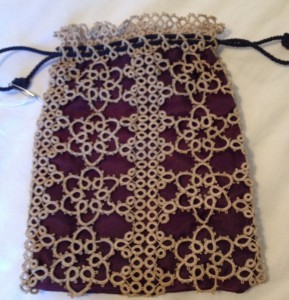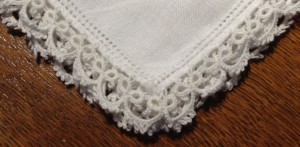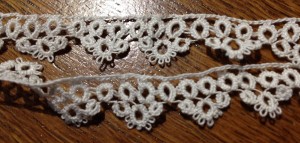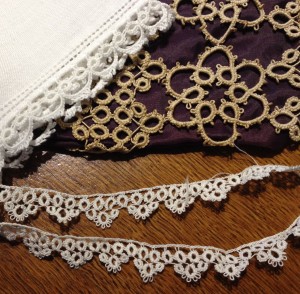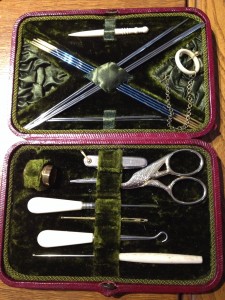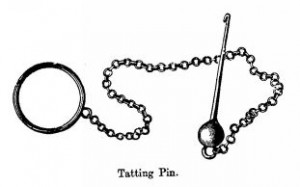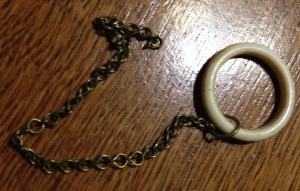Over Thanksgiving I purchased this absolutely beautiful tatted reticule at a small shop in Asheville, North Carolina. We were strolling along some streets we’d not visited before and this small bag in the Honeypot display window just jumped out at me.
The store is quite quirky and carries both vintage clothing and accessories and items from local designers. After rescuing this bag from the shop window, we spent some time exploring what else they had – unfortunately there were no other needlework related items but I’ll certainly make a return trip on our next visit to Asheville!
Those of us who do needlework often say that our hard work will someday end up at Goodwill or in a shop like this. When I see something this pretty it’s nice to be able to ‘rescue’ it to add it to my small collection of needlework treasures! Not only are the items beautiful and represent a lot of time and effort, they encourage learning more about different types of needlework.
This bag is about 6.5 x 8.5 inches, lined with plum-colored fabric which I’m pretty sure is acrylic. I should do a burn test on some of the frayed fibers at some point to confirm this. The tatting seems superior in quality to the hand sewing on the lining. Might the piece have been re-lined at some point? The drawstrings are a dark navy cording which came directly from a fabric store.
I’ve never learned to tat, nor do I know much about the art form besides that there are two different primary methods – shuttle and needle – but I do know a lot of work went in to this piece! Tatting is often an edging or a small motif appliquéd onto an item. This is over 100 square inches of work! Wow!
There are two other pieces of tatting in my little collection – both edgings. The first is a sweet little handkerchief with a tatted border. When I think of tatting, this is exactly what I think of.
The other I actually didn’t realize I had at first. At the Embroiderers’ Guild Merchandise Night this year I bought a bag of odds and ends of lace (for a ridiculously low price) to use as embellishments on various needlework items. When showing my haul to some friends, we discovered this piece of tatted edging!
Putting all three together gives an idea of the ambitious size of the bag.
In doing some research about tatting I may have also solved another mystery! A while ago I purchased this vintage sewing kit on Etsy.
It was constructed in Glasgow and contains a nice array of tools that a needlewoman would need. The only item that stumped me was the bone ring with a chain in the upper half of the photo. None of the stitchers or knitters I’ve shown the kit to have been able to enlighten me – well, possibly that’s because none of us learned to tat in the 1800s!
According to the very informative article Civil War Tatting by Virginia Mescher early tatting shuttles did not have pointed ends so, “Tatting pins, sometimes called purling pins, were usually mentioned in period publications and were apparently the invention of Mlle. Reigo. They were used to either form the picots or join the picots to one another and were made in four sizes, with No. 4 being the largest. The pin assembly included a ring of bone or brass, which was attached to a chain about three inches long, worn on the thumb of the left hand, with a small crochet-like hook or long, blunt tipped needle attached to the end of the chain.”
I found this drawing of a tatting pin and put it side by side with my mystery item:
Ta Da! My mystery item could very well be the ring and chain from a missing tatting pin!
Every time I think I know a lot about hand work I find I still have so much to learn. For instance, I have no idea if my items were made with shuttle tatting or needle tatting, or even how one tells the difference.
It’s been fun doing some initial research on my latest acquisition and wonder what my next rescued treasure will be!


